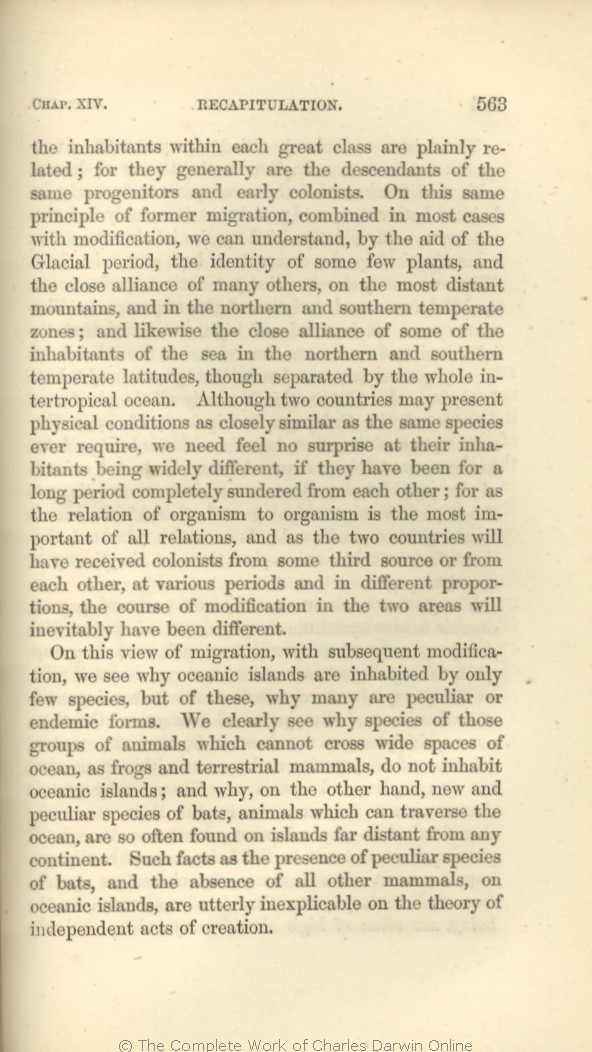of the inhabitants within each great class are plainly related; for they
generally are the | generally are the 1866 |
| will generally be 1859 1860 1861 |
| are the 1869 1872 |
| and in the northern and southern temperate zones; 1866 1869 1872 |
| under the most different climates; 1859 1860 1861 |
| latitudes, 1866 1869 1872 | | zones, 1859 1860 1861 |
| countries 1861 1866 1869 1872 | | areas 1859 1860 |
| ..... 1861 1866 1869 1872 | | the same 1859 1860 |
| as closely similar as the same species ever require, 1861 1866 1869 1872 |
| of life, 1859 1860 |
| sundered 1861 1866 1869 1872 | | separated 1859 1860 |
| countries 1861 1866 1869 1872 | | areas 1859 1860 |
| from some third source or from each other, 1859 1860 1861 1866 |
| OMIT 1869 1872 |
| the 1859 1860 1861 1866 |
| from some other country or from each other, the 1869 1872 |
| have been 1861 1866 1869 1872 | | be 1859 1860 |
|
|
On this view of migration, with subsequent modification, we
..| ..... 1866 1869 1872 | | can 1859 1860 1861 |
| are 1866 1869 1872 | | should be 1859 1860 1861 |
| only few 1866 1869 1872 | | few 1859 1860 1861 |
| why 1866 1869 1872 | | that 1859 1860 1861 |
| are peculiar or endemic forms. 1866 1869 1872 |
| should be peculiar. 1859 1860 1861 |
| ..... 1866 1869 1872 | | can 1859 1860 1861 |
| species of those groups of 1866 |
| those 1859 1860 1861 |
| species belonging to those groups of 1869 1872 |
| ocean, 1859 1860 1861 1866 | | the ocean, 1869 1872 |
| do 1866 1869 1872 | | should 1859 1860 1861 |
| animals which 1861 1866 1869 1872 | | which 1859 1860 |
| are so often 1866 1869 |
| should so often be 1859 1860 1861 |
| are often 1872 |
| facts 1859 1860 1861 1866 | | cases 1869 1872 |
| bats, 1859 1860 1861 1866 | | bats 1869 1872 |
| and 1859 1860 1861 1866 |
| on oceanic islands, and 1869 |
| on oceanic islands and 1872 |
| mammals, on oceanic islands, are 1859 1860 1861 1866 |
| terrestrial mammals, are facts 1869 1872 |
|









